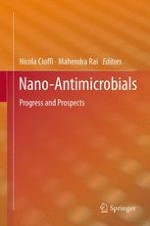2012 | OriginalPaper | Chapter
6. Characterisation of Nano-antimicrobial Materials
Authors : Timothy Sullivan, James Chapman, Fiona Regan
Published in: Nano-Antimicrobials
Publisher: Springer Berlin Heidelberg
Activate our intelligent search to find suitable subject content or patents.
Select sections of text to find matching patents with Artificial Intelligence. powered by
Select sections of text to find additional relevant content using AI-assisted search. powered by
